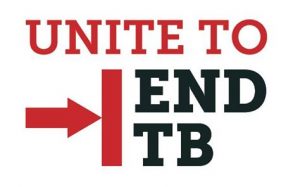
At a recent event in Washington, DC, South African Minister of Health and chair of the Stop TB Partnership Aaron Motsoaledi, spoke of the difficulty of lighting the fire under TB, to get the world’s attention, even as this scourge kills 1.5 million people per year, making it the second most deadly infectious disease after acute lower respiratory infections. Is it because though all are at risk of contracting TB, those who are most vulnerable belong to marginalized populations – among them, prisoners, migrants, people living with HIV/AIDS, and poor people living in crowded, unsanitary conditions?
It is as though some deaths – and lives – just don’t seem to matter much to the world. There is sadly nothing new about that. But perhaps this tragically obvious point contains the seeds of one way to begin to change that.
What if policies were to force these lives to matter by assuring that their deaths did not pass unnoticed – helping make every life count by making every death count? There is a model for this: maternal, child, and newborn mortality audits.
The World Bank describes maternal mortality audits thus:
“A maternal death audit is an in-depth systematic review of maternal deaths to delineate their underlying health social and other contributory factors, and the lessons learned from such an audit are used in making recommendations to prevent similar future deaths. It is not a process for apportioning blame or shame but exists to identify and learn lessons from the remediable factors that might save the lives of more mothers in future.”
The same approach applies to child and newborn death audits, examining each child or newborn’s death to determine its cause, with the goal of understanding how to better prevent such deaths in the future.
A basic principle behind such audits is that every life counts, so every death must be understood. No maternal, child, or newborn death should be accepted as a given – as the vast majority of these deaths, like the vast majority of TB deaths, are avoidable. It is necessary to understand the cause for each death, enabling measures to change the factors that led to that death, and thus avoid future deaths stemming from similar causes.
Such an approach seems well-tailored to the global goal of ending TB, a goal captured by one of the Sustainable Development Goal targets (“By 2030, end the epidemics of AIDS, tuberculosis, malaria and neglected tropical diseases and combat hepatitis, water-borne diseases and other communicable diseases”; ending TB is defined as reducing TB incidence to 10/100,000 population globally (page 20, n. 2). Meanwhile, there is a growing understanding of how to eliminate TB, and a movement afoot to establish Zero TB Cities. No TB death should be accepted, or taken for granted.
Perhaps, then, these maternal, child, and newborn death audits could be adapted to the TB context. As with these existing audits, the idea of TB mortality audits would be to establish a system to examine every TB death and to endeavor to understand why it happened and what could have been done to prevent it (or at least to greatly reduce the risk to similarly situated people).
There could be a number of benefits from TB mortality audits. They could:
• lead to valuable lessons on what adjustments might be needed in a country’s (or sub-national) TB strategy;
• require engagement with the community on TB through investigations into the deaths – which could in turn contribute to more community action and advocacy, as community members are forced to regularly engage with TB. The investigations could heighten the visibility of TB and perhaps have more people asking why their neighbors are dying, as they see how the deaths could have been avoided;
• lead to increased media attention, reporting on the audits, and possibly particular deaths that could and should have been prevented;
• build community expectations that no TB death should be accepted — which could in turn contribute to advocacy and build political pressure.
Hopefully TB audits could, to borrow from Dr. Motsoaledi, help light the fire.
There are well-developed tools and guides for maternal death audits, such as from the World Bank and from the International Federation of Gynecology and Obstetrics. Similar tools could be developed for TB.
TB death audits might be piloted to better understand their potential and how they would operate, including to understand the possible costs (economically and in people’s time) of such a project, perhaps initially working with highly vulnerable communities (e.g., miners) or populations (e.g., prisoners).
Such audits would hardly eliminate the need to move full steam ahead with other efforts to end TB, from rolling out new tools such as bedaquiline, a antibiotic for multi-drug resistant TB, and a new rapid test, along with continued research and development, scaling up investments, health system strengthening with particular focus on health workers, and addressing the social determinants of health and inequalities that drive TB. TB mortality audits could serve as one more pressure point for the heightened focus that TB demands.



